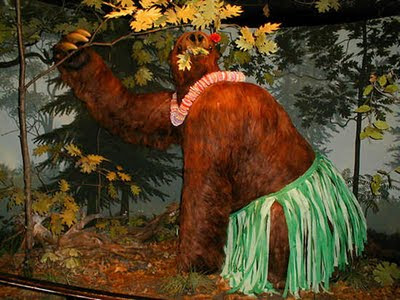As we work on preparing Creature Comforts: Collecting Natural History at the Rosenbach, which opens on Sept 21 (less than two weeks!), all of us here are excited about a very special visitor from the Academy of Natural Sciences that is coming to be a part of the exhibit–Megalonyx jeffersoni. What you ask, is Megalonyx jeffersoni?
You can find out more about Jefferson’s sloth at the Academy of Natural Sciences website and of course in our upcoming exhibition, which will feature bones on loan from the Academy alongside our own Buffon encyclopedia.
As a preview, here’s a 1799 engraving of the bones which Jefferson saw.
 Wistar, Caspar. 1799. “A description of the Bones deposited by the President, in the Museum of the Society, and represented in the annexed plates.” Transactions of the American Philosophical Society, Vol. 4, No. 71, pp. 526-531.
Wistar, Caspar. 1799. “A description of the Bones deposited by the President, in the Museum of the Society, and represented in the annexed plates.” Transactions of the American Philosophical Society, Vol. 4, No. 71, pp. 526-531.
Here’s a more complete mounted reconstruction at the Ohio State University Museum

And just for kicks, here’s Rusty, a model Megalonyx at the University of Iowa Museum of Natural History.
 You can see more pictures of Rusty decked out for every season on his very own Facebook page!
You can see more pictures of Rusty decked out for every season on his very own Facebook page!
Lions and tigers and sloths, oh my!
